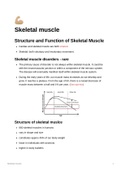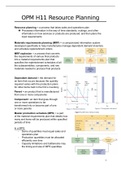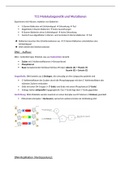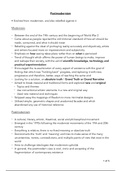ECAA Maths Notes
It should be assumed that, where mention is made of a particular quantity, knowledge of the SI
unit of that quantity is also expected. Candidates will be expected to be familiar with the SI
prefixes e.g. 10-9 = nano and 109 = giga
Advanced Mathematics Knowledge for the Economics Admissions Assessment:
B1: Algebra and Functions:
Laws and Indices for all rational exponents:
• am × an = a𝑚+ 𝑛
• am ÷ an = a𝑚−𝑛
• (am)n = a𝑚 × 𝑛
• a0 = 1
1
• a−𝑛 = 𝑎𝑛
𝑚
•
𝑛 𝑛
𝑎 𝑛 = ( √𝑎)m = √𝑎𝑚
• (𝑎𝑏)m = am × bm
𝑎
• (𝑏)n = an ÷ bn
Use and manipulation of surds; simplifying expressions that contain surds, including
rationalising the denominator:
• √𝑎𝑏 = √𝑎√𝑏
• √𝑎/𝑏 = √𝑎 ÷ √𝑏
Note: Square rooting is another way of writing ‘raise to the power of a half’ so all the rules of
indices apply to surds.
Rationalising the denominator is the process when surds are removed from the denominator.
It is also possible to rationalise the denominator of more complicated expressions. The trick to
do this uses the difference of two squares:
a2 – b2 = (a – b) (a + b)
3
E.g. Rationalise the denominator of 8− 2√3
3 3 × (8+2√3)
= (8−2
8−2√3 √3) × (8+2√3)
24+ 6√3
= 64 −4 × 3
12+3√3
=
26
Quadratic functions and their graphs; the discriminant of a quadratic function; completing the
square; solution of quadratic equations:
A quadratic function is one of the form f(x) = ax2 + bx + c A, b and c are constants and a ≠ 0.
−𝑏 ± √𝑏2 −4𝑎𝑐
𝑥= 2𝑎
The graph y = ax2 + bx + c crosses the:
y-axis at the point (0, c); x-axis at the root(s) of the equation ax2 + bx + c = 0
, It can be useful to rewrite quadratic functions in terms of a bracket squared for two main
reasons: To solve a quadratic equation; To find the coordinates of the vertex of a parabola.
• The number in the bracket is always half the coefficient of x
• The constant to be subtracted at the end is always the number in the bracket squared
This process allows you to write any quadratic in the form a(x + p)2 + q
𝑥 +𝑥
The quadratic y = (x + p)2 + q has a turning point at (-p, q) and the line of symmetry x = -p= 1 2 2
The expression b2 – 4ac is called the discriminate of the quadratic (often symbolised by the
Greek letter △) When △ > 0 there is two distinct roots, when △ = 0 there is one (repeated)
root and when △ < 0 the equation has no real roots.
If you have a mixture of 𝑥 2 , 𝑥, 𝑦 2 and 𝑦, complete the square.
Simultaneous equations: analytical solution by substitution, e.g. of one linear and one quadratic
equation
Solution of linear and quadratic inequalities:
𝑥 ∈ [𝑎, 𝑏) means 𝑎 ≤ 𝑥 < 𝑏 Square brackets means the endpoint is included, and
To solve quadratic inequalities, rearrange to the round brackets means the endpoint is not included
make one side zero and use a graph.
Solve the inequality: 5 + 3x – 2x2 > 1 – 4x
4 + 7x -2x2 > 0
2x2 -7x – 4 < 0
(2x + 1)(x – 4) < 0
1 1
x = -2 or x = 4 Under the x-axes is the wanted region so: − 2 < 𝑥 < 4
Algebraic manipulation of polynomials, including: expanding brackets and collecting like terms;
factorisation and simple algebraic division (by a linear polynomial including those of the form
ax + b); Use of the Factor Theorem and the Remainder Theorem
You can divide two polynomials by using polynomial division.
• Divide the leading order term in the numerator by the leading order term in the
denominator. This is the leading order term of the answer.
• Multiply this term by the whole denominator. Subtract the resulting expression from
the numerator.
• Repeat this process until all terms have been accounted for.
Notice that the factor theorem says two things:
- If (x – a) is a factor of f(x) then f(a) = 0
- And: If f(a) = 0 then (x – a) is a factor of f(x)
B2: Sequences and Series: A sequence is a list of numbers in a specific order, and can be finite
or infinite. Sequences can be described in two different ways: by a term-to-term rule:
u1 = 2, un+1= un+3 By a position to term rule: u n = 3n – 1
A simple recurrence relation of the form xn+1 = f(xn)
It should be assumed that, where mention is made of a particular quantity, knowledge of the SI
unit of that quantity is also expected. Candidates will be expected to be familiar with the SI
prefixes e.g. 10-9 = nano and 109 = giga
Advanced Mathematics Knowledge for the Economics Admissions Assessment:
B1: Algebra and Functions:
Laws and Indices for all rational exponents:
• am × an = a𝑚+ 𝑛
• am ÷ an = a𝑚−𝑛
• (am)n = a𝑚 × 𝑛
• a0 = 1
1
• a−𝑛 = 𝑎𝑛
𝑚
•
𝑛 𝑛
𝑎 𝑛 = ( √𝑎)m = √𝑎𝑚
• (𝑎𝑏)m = am × bm
𝑎
• (𝑏)n = an ÷ bn
Use and manipulation of surds; simplifying expressions that contain surds, including
rationalising the denominator:
• √𝑎𝑏 = √𝑎√𝑏
• √𝑎/𝑏 = √𝑎 ÷ √𝑏
Note: Square rooting is another way of writing ‘raise to the power of a half’ so all the rules of
indices apply to surds.
Rationalising the denominator is the process when surds are removed from the denominator.
It is also possible to rationalise the denominator of more complicated expressions. The trick to
do this uses the difference of two squares:
a2 – b2 = (a – b) (a + b)
3
E.g. Rationalise the denominator of 8− 2√3
3 3 × (8+2√3)
= (8−2
8−2√3 √3) × (8+2√3)
24+ 6√3
= 64 −4 × 3
12+3√3
=
26
Quadratic functions and their graphs; the discriminant of a quadratic function; completing the
square; solution of quadratic equations:
A quadratic function is one of the form f(x) = ax2 + bx + c A, b and c are constants and a ≠ 0.
−𝑏 ± √𝑏2 −4𝑎𝑐
𝑥= 2𝑎
The graph y = ax2 + bx + c crosses the:
y-axis at the point (0, c); x-axis at the root(s) of the equation ax2 + bx + c = 0
, It can be useful to rewrite quadratic functions in terms of a bracket squared for two main
reasons: To solve a quadratic equation; To find the coordinates of the vertex of a parabola.
• The number in the bracket is always half the coefficient of x
• The constant to be subtracted at the end is always the number in the bracket squared
This process allows you to write any quadratic in the form a(x + p)2 + q
𝑥 +𝑥
The quadratic y = (x + p)2 + q has a turning point at (-p, q) and the line of symmetry x = -p= 1 2 2
The expression b2 – 4ac is called the discriminate of the quadratic (often symbolised by the
Greek letter △) When △ > 0 there is two distinct roots, when △ = 0 there is one (repeated)
root and when △ < 0 the equation has no real roots.
If you have a mixture of 𝑥 2 , 𝑥, 𝑦 2 and 𝑦, complete the square.
Simultaneous equations: analytical solution by substitution, e.g. of one linear and one quadratic
equation
Solution of linear and quadratic inequalities:
𝑥 ∈ [𝑎, 𝑏) means 𝑎 ≤ 𝑥 < 𝑏 Square brackets means the endpoint is included, and
To solve quadratic inequalities, rearrange to the round brackets means the endpoint is not included
make one side zero and use a graph.
Solve the inequality: 5 + 3x – 2x2 > 1 – 4x
4 + 7x -2x2 > 0
2x2 -7x – 4 < 0
(2x + 1)(x – 4) < 0
1 1
x = -2 or x = 4 Under the x-axes is the wanted region so: − 2 < 𝑥 < 4
Algebraic manipulation of polynomials, including: expanding brackets and collecting like terms;
factorisation and simple algebraic division (by a linear polynomial including those of the form
ax + b); Use of the Factor Theorem and the Remainder Theorem
You can divide two polynomials by using polynomial division.
• Divide the leading order term in the numerator by the leading order term in the
denominator. This is the leading order term of the answer.
• Multiply this term by the whole denominator. Subtract the resulting expression from
the numerator.
• Repeat this process until all terms have been accounted for.
Notice that the factor theorem says two things:
- If (x – a) is a factor of f(x) then f(a) = 0
- And: If f(a) = 0 then (x – a) is a factor of f(x)
B2: Sequences and Series: A sequence is a list of numbers in a specific order, and can be finite
or infinite. Sequences can be described in two different ways: by a term-to-term rule:
u1 = 2, un+1= un+3 By a position to term rule: u n = 3n – 1
A simple recurrence relation of the form xn+1 = f(xn)










